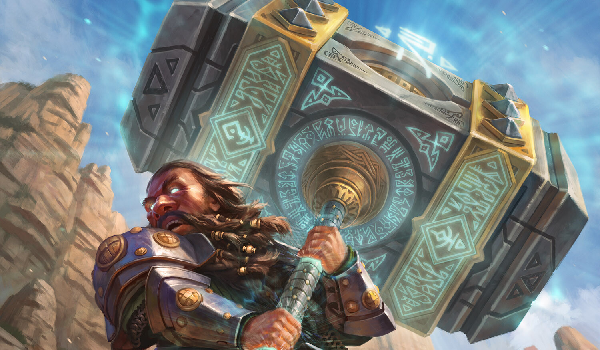Are you a Quiet Speculation member?
If not, now is a perfect time to join up! Our powerful tools, breaking-news analysis, and exclusive Discord channel will make sure you stay up to date and ahead of the curve.
It's metagame time again! And yet again, it's going up in the middle of yet another spoiler season. Which has happened a lot this year, Fortunately, the release schedule is going to be more reasonable next year. Supposedly, anyway. In any case, it's not particularly burdensome this time, as there isn't much to talk about from Innistrad: Crimson Vow. So far, anyway. It's always possible that there are Modern playables lurking in the later half of the spoilers, but that would be a huge change from the norm. They're usually out in the first wave to generate the most interest. Not that I'm complaining; it's nice these days when Modern gets a break and time to breathe before new cards arrive. After all, the format is already home to much upheaval.
October represented a huge change from September. The overall population was up significantly from 426 to 545. January is still the largest data set this year, but October is a close second. This is largely down to more events in October than September, however there were more large Preliminaries in October than September. I have no idea why, but I do often hear that players like this metagame. Such an affinity may be translating into more players logging into MTGO. That would be a little surprising since paper is returning, but I don't have a better explanation. Also, October's data includes a number of Preliminaries and one Challenge-like event from MTGMelee.
October Metagame
To make the tier list, a given deck has to beat the overall average population for the month. The average is my estimate for how many results a given deck “should” produce on MTGO. Being a tiered deck requires being better than “good enough;” in September the average population was 6.99, meaning a deck needed 7 results to beat the average and make Tier 3. This is the fourth month in a row that's been the case. There's nothing forcing this to be the case, it's just how it works out. Sometimes it's been down to the low population and 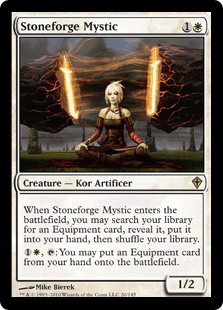 sometimes it's happened due to a very open metagame producing lots of unique decks. September and July were the former, August and October are the latter. And if it weren't for some late rogue decks making the list, October would have broken the streak. We'll see what November brings.
sometimes it's happened due to a very open metagame producing lots of unique decks. September and July were the former, August and October are the latter. And if it weren't for some late rogue decks making the list, October would have broken the streak. We'll see what November brings.
Therefore, Tier 3 begins with decks posting 7 results. Then we go one standard deviation above average to set the limit of Tier 3 and cutoff for Tier 2. The STdev was 13.67, which means that means Tier 3 runs to 21. Again, it's the starting point to the cutoff, then one above for the next Tier. Therefore Tier 2 starts with 22 results and runs to 36. Subsequently, to make Tier 1, 37 decks are required. Which is high for recent months. The very high STdev is down to the sheer number of different decks making the tier list. This adds some additional separation to the data that it really didn't need, a statement that will be clarified shortly.
The Tier Data
As I've been alluding to, the total numbers of decks is considerably up from September. 78 decks placed in October compared to 65 in September. It's not quite August's mark of 80 but a very respectable collection nonetheless. A lot of this seems to be that there's a clear metagame established now and players are looking for edges and in some cases finding it. However, it looks to be more of a case-by-case sort of success because the top tiers are quite clearly pulling away from Tier 3. See, despite having one of the higher overall populations, October still has a low number of decks making the list with 15. It makes sense when you see the data.
| Deck Name | Total # | Total % |
|---|---|---|
| Tier 1 | ||
| Hammer Time | 74 | 13.58 |
| UW Control | 63 | 11.56 |
| Cascade Crashers | 48 | 8.81 |
| Burn | 39 | 7.15 |
| Tier 2 | ||
| UR Thresh | 34 | 6.24 |
| Jund Saga | 33 | 6.05 |
| 4-Color Blink | 33 | 6.05 |
| Tier 3 | ||
| Blue Living End | 18 | 3.30 |
| Yawgmoth | 18 | 3.30 |
| Amulet Titan | 12 | 2.20 |
| Mill | 12 | 2.20 |
| Tribal Elementals | 9 | 1.65 |
| Mono-Green Tron | 9 | 1.65 |
| 4-Color Bring to Light | 9 | 1.65 |
| Belcher | 7 | 1.28 |
The bottom of Tier 2 and top of Tier 3 are separated by 15 results. That is an enormous gap, and something like that cannot be coincidence. I think that the regularly competitive MTGO crowd, which is a fairly small number of grinders and streamers, have decided on the best decks and are just playing them in the Premier events. This means that if you're intending to play online there are very clear decks to target. However, I must again stress that competitive MTGO is a fairly inbred metagame thanks to the low population, and it may have little bearing on what to expect for Not-GP Las Vegas.
It's Still Hammer Time
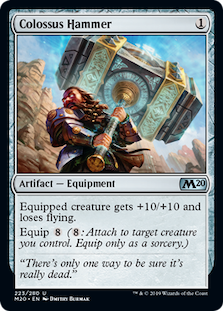 I'm a bit incredulous, but for the fourth month in a row, Hammer Time is the top deck. I understand the appeal of the deck, but I don't understand how it manages to hold onto the top slot so decisively month after month. Its main strategy is just Infect with new skin. The same things that beat Infect should work against Hammer Time. And in fairness, up until Lurrus of the Dream-Den came along, it did. I'd seen variants on the deck since 2019 but they weren't very good. Lurrus changed that by giving Hammer Time the long game Infect never had because it can buy back threats, and since the pump effects are permanent, the opponent is never truly out of danger.
I'm a bit incredulous, but for the fourth month in a row, Hammer Time is the top deck. I understand the appeal of the deck, but I don't understand how it manages to hold onto the top slot so decisively month after month. Its main strategy is just Infect with new skin. The same things that beat Infect should work against Hammer Time. And in fairness, up until Lurrus of the Dream-Den came along, it did. I'd seen variants on the deck since 2019 but they weren't very good. Lurrus changed that by giving Hammer Time the long game Infect never had because it can buy back threats, and since the pump effects are permanent, the opponent is never truly out of danger.
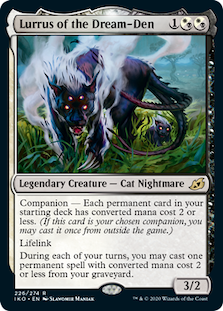 And that's worked well for the past year. However, there's been a shift in deck composition. A new Hammer Time variant has started cropping up that's dropping Lurrus so it can run Nettlecyst and Sword of Fire and Ice maindeck, with more Swords sideboarded. The intention seems to be to move towards a Stoneforge Mystic value plan. This does make sense in light of UW Control's rise, making it hard to resolve Lurrus, which also loses value in the face of exile removal. However, I thought that was why Hammer Time was running Urza's Saga? It's a potent plan on its own and attacks UW's typical do-nothing plan. I suppose that Spreading Seas necessitates the change, but again I wonder if it's really a big enough threat to warrant the rebuild. I'll be watching this development.
And that's worked well for the past year. However, there's been a shift in deck composition. A new Hammer Time variant has started cropping up that's dropping Lurrus so it can run Nettlecyst and Sword of Fire and Ice maindeck, with more Swords sideboarded. The intention seems to be to move towards a Stoneforge Mystic value plan. This does make sense in light of UW Control's rise, making it hard to resolve Lurrus, which also loses value in the face of exile removal. However, I thought that was why Hammer Time was running Urza's Saga? It's a potent plan on its own and attacks UW's typical do-nothing plan. I suppose that Spreading Seas necessitates the change, but again I wonder if it's really a big enough threat to warrant the rebuild. I'll be watching this development.
Also, just for the record, yes, Hammer Time has a huge metagame share. It's not an outlier, I checked. It also isn't Tier 0. That doesn't mean it isn't potentially too good given its metagame position, either. It is what it is.
UW Rises
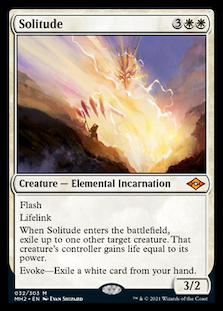 On that note, UW (frequently UW splashing Fire // Ice, but that's not a different archetype) is holding strong in the second position. And it's not merely acting as an also-ran but was a genuine threat to Hammer Time's position for most of October. As I mentioned last month, a number of metagame forces have come together to allow UW to potentially answer any deck in Modern. Coupled with its predators (namely Tron) being kept out by Burn and Hammer Time, it's been free to roam Modern. The only thing keeping it from the top slot is Hammer Time's curious stranglehold on the slot.
On that note, UW (frequently UW splashing Fire // Ice, but that's not a different archetype) is holding strong in the second position. And it's not merely acting as an also-ran but was a genuine threat to Hammer Time's position for most of October. As I mentioned last month, a number of metagame forces have come together to allow UW to potentially answer any deck in Modern. Coupled with its predators (namely Tron) being kept out by Burn and Hammer Time, it's been free to roam Modern. The only thing keeping it from the top slot is Hammer Time's curious stranglehold on the slot.
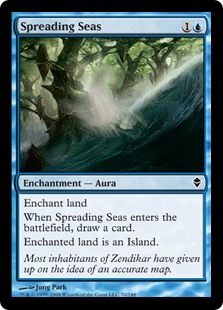 But then something weird happened. Towards the end of the month, UW began falling off, and Hammer Time was able to pull away. Given UW's performance up until that point it didn't make much sense. This was coupled with a resurgence of UR Thresh, but I think that UW's drop off led to Thresh's comeback, not resulted from it. I've been looking for some explanation to why this happened on MTGO and I got nothing. It may be that pilots got bored or there was a subtle sideboard tweak that changed everything.
But then something weird happened. Towards the end of the month, UW began falling off, and Hammer Time was able to pull away. Given UW's performance up until that point it didn't make much sense. This was coupled with a resurgence of UR Thresh, but I think that UW's drop off led to Thresh's comeback, not resulted from it. I've been looking for some explanation to why this happened on MTGO and I got nothing. It may be that pilots got bored or there was a subtle sideboard tweak that changed everything.
This fall-off directly coincided with a shift in the paper market. October saw a rise in prices for certain Modern staples. Not all of them, nor was the increase consistent. However, on October 23 the prices of a number of UW staples suddenly spiked. Solitude was the biggest change, increasing by between $15-$30 over three days (the exact increase depends on where you looked). Spreading Seas's price doubled from around $2.20 to $4.50, and a lot of other UW specific cards saw additional price increases over the next few days. There's no reason that this paper change would have affected the online meta, but the timing is too close for me to dismiss it as a coincidence. More digging is needed, but it's a very odd occurrence.
Power Rankings
Tracking the metagame in terms of population is standard practice. But how do results actually factor in? Better decks should also have better results. In an effort to measure this, I use a power ranking system in addition to the prevalence list. By doing so, I measure the relative strengths of each deck within the metagame. The population method gives a decks 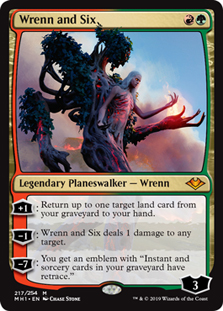 that consistently just squeaks into Top 32 the same weight as one that Top 8’s. Using a power ranking rewards good results and moves the winningest decks to the top of the pile and better reflects its metagame potential.
that consistently just squeaks into Top 32 the same weight as one that Top 8’s. Using a power ranking rewards good results and moves the winningest decks to the top of the pile and better reflects its metagame potential.
Points are awarded based on the population of the event. Preliminaries award points for record (1 for 3 wins, 2 for 4 wins, 3 for 5) and Challenges are scored 3 points for Top 8, 2 for Top 16, 1 for Top 32. If I can find them, non-Wizards events will be awarded points the same as Challenges or Preliminaries are depending on what the event in question reports/behaves like. Super Qualifiers and similar higher-level events get an extra point if they’re over 200 players, and a fifth for over 400 players. There were three MTGO PTQ's in October, though Wizards is just reporting them as Premier events. These all award 4 points, but oddly only reported the Top 16. This has skewed the point totals upwards slightly though it is at least somewhat balanced by the lower number of decks.
The Power Tiers
Just like with population, the total points were up in October. September had 707 total points while October soared to 955, which again is the highest since January. This is on the higher end for the returned metagame updates, but still more in line with what I was seeing last year. I'm beginning to suspect that 2020 was simply a very good year for MTGO and the number's I'm getting this year are more in line with what MTGO data "should" look like. Pandemic lockdowns will do that.
The average points were 12.24, which means that 13 points makes Tier 3. Just like with the population, the numbers are up but not by much. The STDev was 24.25, which is pretty high. That makes sense as the data is so broad but it is atypical for recent months. Thus add 25 to the starting point and Tier 3 runs to 38 points. Tier 2 starts with 39 points and runs to 64. Tier 1 requires at least 65 points.
| Deck Name | Total Points | Total % |
|---|---|---|
| Tier 1 | ||
| Hammer Time | 126 | 13.19 |
| UW Control | 107 | 11.20 |
| Cascade Crashers | 83 | 8.69 |
| Burn | 70 | 7.33 |
| 4-Color Blink | 67 | 7.01 |
| UR Thresh | 66 | 6.91 |
| Tier 2 | ||
| Jund Saga | 60 | 6.28 |
| Tier 3 | ||
| Blue Living End | 35 | 3.66 |
| Yawgmoth | 35 | 3.66 |
| Amulet Titan | 25 | 2.62 |
| Mill | 24 | 2.51 |
| Tribal Elementals | 15 | 1.57 |
| 4-Color Bring to Light | 15 | 1.57 |
| Belcher | 14 | 1.47 |
Poor Jund Saga, all alone in Tier 2. Every other Tier 2 deck had the points to jump into Tier 1. Which some might see as an indictment of Saga's metagame position, but they're missing the why all the other decks escaped Tier 2. It comes down to a quirk in the points system. The PTQ's are to blame for this weird jump into Tier 1. Each one was dominated by a different deck, and with the boost of points those decks received they were able to make the jump. Jund Saga didn't really show up in the PTQ results, but it was a very consistent performer in Challenges and Preliminaries. Thus it stayed in Tier 2, alone and neglected. But it still outperformed Tier 3 by a very wide margin. As I said, the Top Tiers have been decided by the online crowd.
Average Power Rankings
Finally, we come to the average power rankings. These are found by taking total points earned and dividing it by total decks, which measures points per deck. I use this to measure 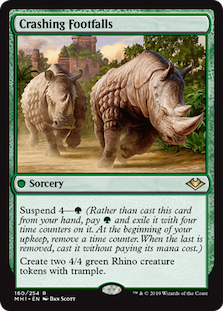 strength vs. popularity. Measuring deck strength is hard. There is no Wins-Above-Replacement metric for Magic, and I'm not certain that one could be credibly devised. The game is too complex and power is very contextual. Using the power rankings certainly helps, and serves to show how justified a deck’s popularity is. However, more popular decks will still necessarily earn a lot of points. Which tracks, but also means that the top tier doesn't move much between population and power, and obscures whether they really earned their position.
strength vs. popularity. Measuring deck strength is hard. There is no Wins-Above-Replacement metric for Magic, and I'm not certain that one could be credibly devised. The game is too complex and power is very contextual. Using the power rankings certainly helps, and serves to show how justified a deck’s popularity is. However, more popular decks will still necessarily earn a lot of points. Which tracks, but also means that the top tier doesn't move much between population and power, and obscures whether they really earned their position.
This is where the averaging comes in. Decks that earn a lot of points because they get a lot of results will do worse than decks that win more events, indicating which deck actually performs better. A higher average indicates lots of high finishes, where low averages result from mediocre performances and high population. Lower-tier decks typically do very well here, likely due to their pilots being enthusiasts. So be careful about reading too much into the results.
The Real Story
Remember how I mentioned the PTQ's distorted the power tiers? That's also happening with the average power. Everything on the tier list beat the baseline this time. However, Hammer Time would have been just below baseline but for it's very impressive showing in the last PTQ. All the 4 point placings it got in that event saved it from the gutter it spend most of the month inhabiting. That's the power of individual events.
| Deck Name | Average Points | Power Tier Ranking |
|---|---|---|
| Amulet Titan | 2.08 | 3 |
| 4-Color Blink | 2.03 | 1 |
| Mill | 2.00 | 3 |
| Belcher | 2.00 | 3 |
| UR Thresh | 1.94 | 1 |
| Blue Living End | 1.94 | 3 |
| Yawgmoth | 1.94 | 3 |
| Jund Saga | 1.82 | 2 |
| Burn | 1.80 | 1 |
| Cascade Crashers | 1.73 | 1 |
| Hammer Time | 1.70 | 1 |
| UW Control | 1.70 | 1 |
| Tribal Elementals | 1.67 | 3 |
| 4-Color Bring to Light | 1.67 | 3 |
| Baseline | 1.65 |
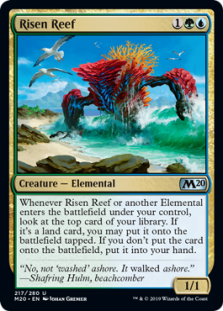 The highest placing high tier deck is 4-Color Blink, making it the actual deck of the month. And it's notably a deck I haven't mentioned before, because it really isn't new. The deck apparently grew from Tribal Elementals because that deck was too dependent on Risen Reef. Players then started cutting the tribal cards for independently good ones and ended with this Yorion, Sky Nomad pile of value. Which did very well, but a lot of that has been from kanister's results. I should note that Cascade Crashers has seen a number of players also going the Yorion route, and the two decks are starting to look very similar, although as of yet they remain distinct.
The highest placing high tier deck is 4-Color Blink, making it the actual deck of the month. And it's notably a deck I haven't mentioned before, because it really isn't new. The deck apparently grew from Tribal Elementals because that deck was too dependent on Risen Reef. Players then started cutting the tribal cards for independently good ones and ended with this Yorion, Sky Nomad pile of value. Which did very well, but a lot of that has been from kanister's results. I should note that Cascade Crashers has seen a number of players also going the Yorion route, and the two decks are starting to look very similar, although as of yet they remain distinct.
All For Now
And with that, I close the books on October. The online metagame has clearly stabilized, and now everyone's looking for a way to exploit the deck. We'll see next time if they were successful and if Crimson Vow has any impact on Modern. Until then!


